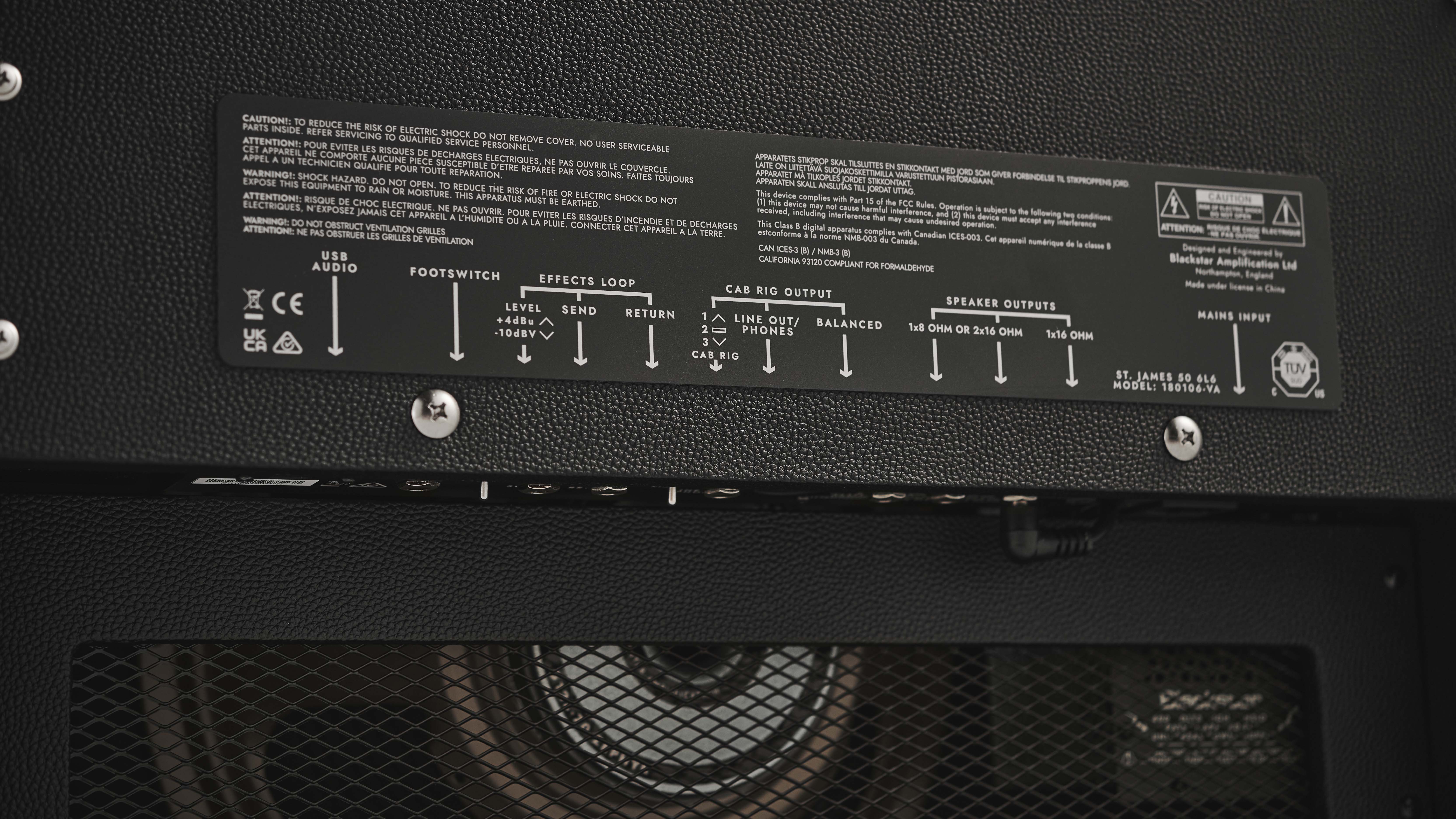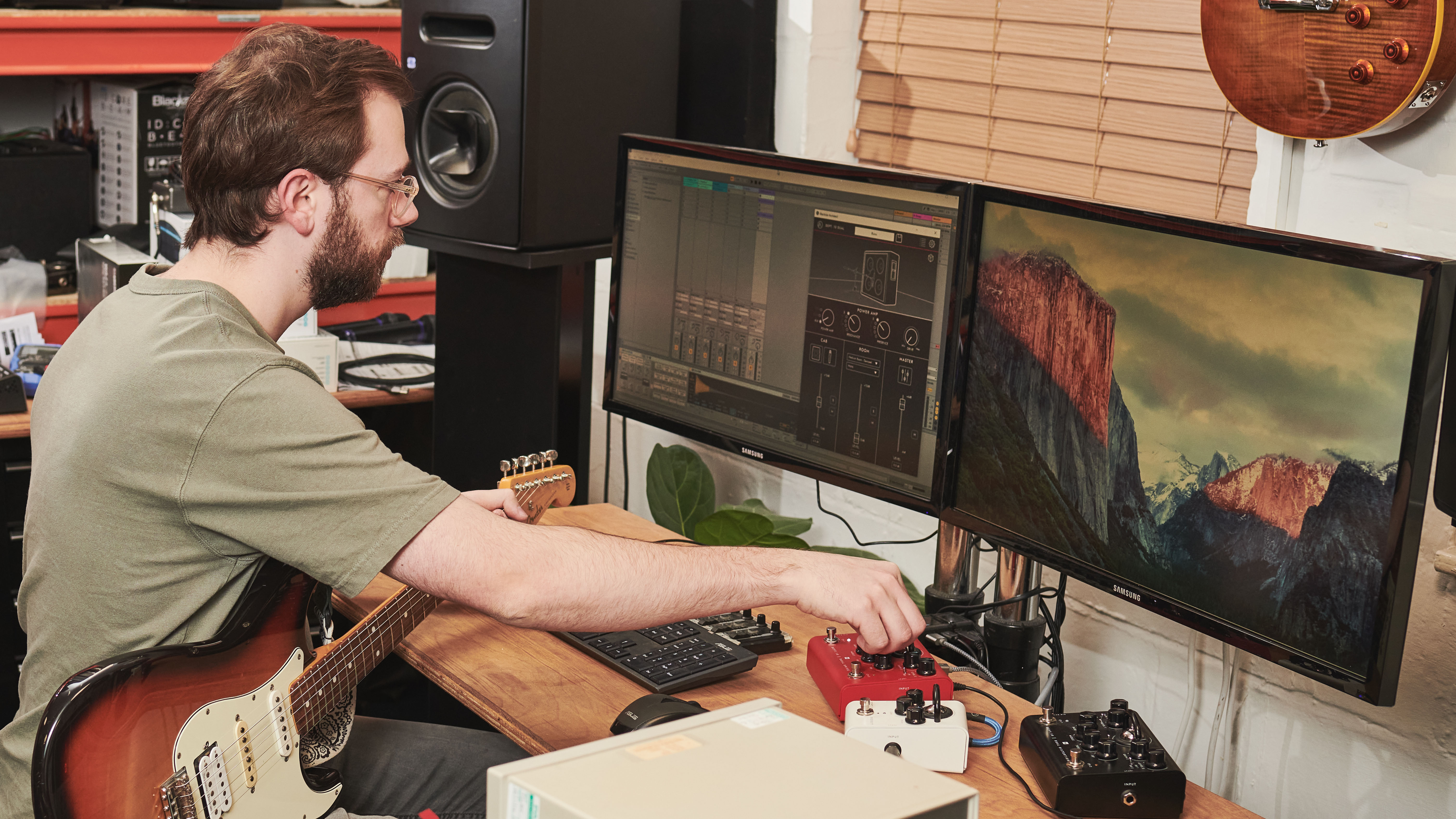MusicRadar Verdict
Two different amp propositions that both excel in their aims. The St James amps showcase Blackstar's strengths right now; delivering genuinely useful innovation for players that complement what are first and foremost superb valve amps for stage, studio and home.
Pros
- +
Great tones from two distinct offerings
- +
A quality, practical combination of boutique looks and lightweight build
- +
Versatility with 2W and SAG modes plus Cab Rig
Cons
- -
The cab's Blackstar logo light requiring its own 9V power supply is a small niggle
MusicRadar's got your back
Blackstar St James review: What are they?
The new logo and boutique looks here are a strong statement that the new St James amps are a landmark release for Blackstar; so is this a new era for the company? Yes and no. The St James models represent new levels of innovation from the Brits, but on paper these two guitar amps also seem to be founded on its familiar tonal expertise.
The St James name references an area of Birmingham geographically and spiritually close to the company. Does the combination of all this produce a new benchmark for them too? Of course, we’re here to find out.

These amps are lightweight by detailed design
The two offerings here are distinct; both the fawn EL-34 and black 6L6 St James are available in 50-watt 1x12 combo and head iterations. The idea is the propositions will make the choice for players clear. Blackstar themselves summarise the 50/EL34 model as a ‘classic low gain pedal platform’, while the 50/6L6 is a ‘classic US clean, modern high gain’ amp. Which of those camps do you see yourselves in? We wonder if the lines can be blurred between them in play.
But let’s get to the headlines here; these amps are lightweight by detailed design. Blackstar are calling the St James the lightest 50W valve amps in the world. Some context: a Marshall Origin ORI50C combo is around 40lbs, a Fender Hot Rod Deluxe IV around 41lbs and an Orange Rockerverb MKII over 45lbs. At 24lbs (11kg) for the 6L6 combo and 13.2lbs (6kg) for the EL34 head here (the 212 vertical cab is 29.7lbs), we can attest; these are definitely a relief for anyone tired of carrying their rig through car parks, up stairs… and wherever else the realities of gigging and practice life take you.
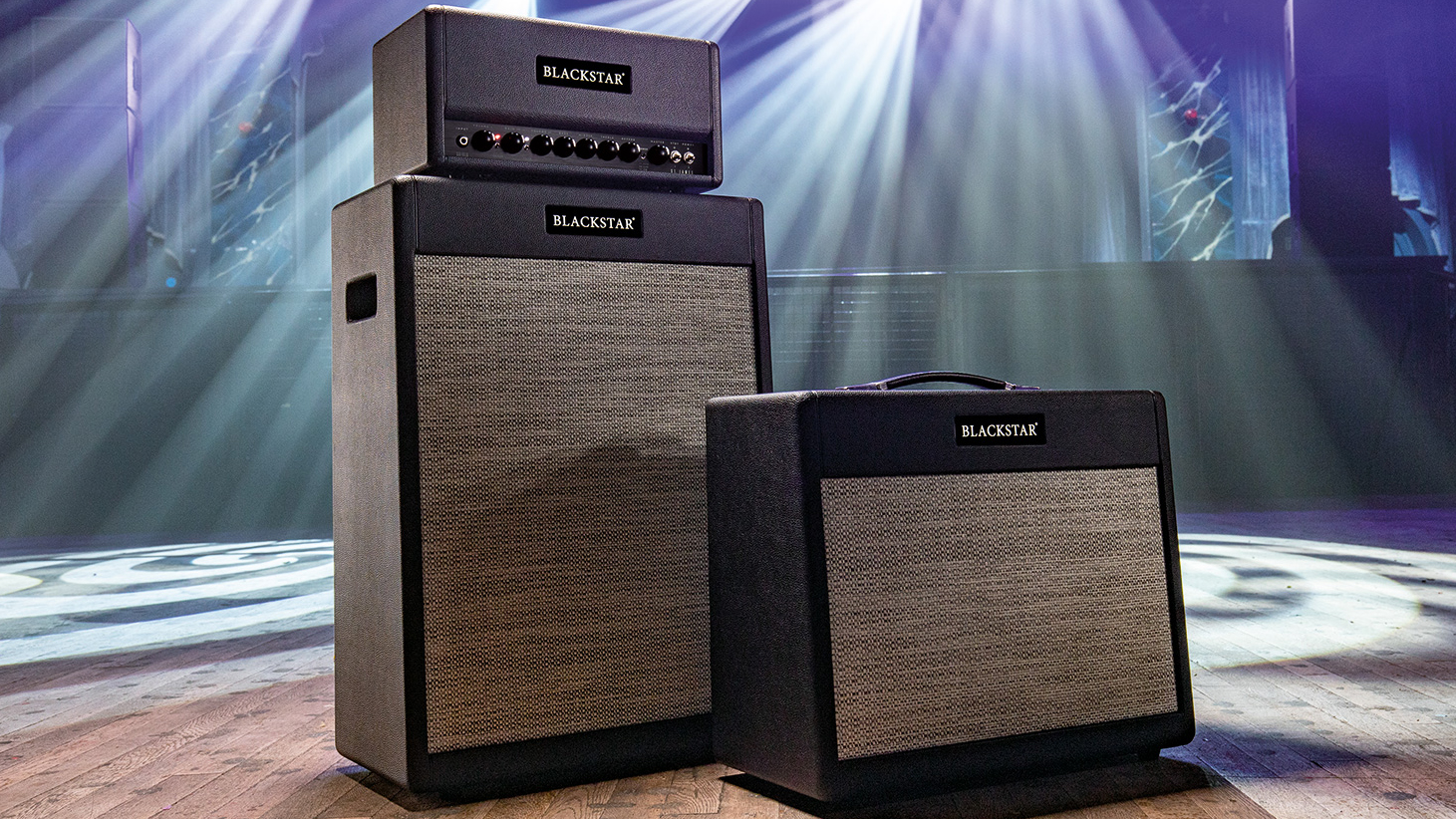
We have innovative build and the integration of modelling technology, but these are valve amps first and foremost
The weight reduction is the result of innovations; an exclusive 70-watt, 12” Celestion Zephyr speaker, based on a Vintage 30 and noticeably lighter. But the magnet used is not neodyium but traditional ferrite. During the 36-month R&D Blackstar even managed to lighten the chassis and opted to use candlenut for the cabinet tonewood because of its lighter weight without negatively compromising the acoustic and physical strengths.
Even the output transformer has been optimised for size and weight. And these use Switched Mode Power Supply Technology for universal voltage compatibility. Even better news for wider travelling players, then.

The second headline feature is something we’ve already seen debut on Blackstar’s Dept 10 Dual Overdrive and Dual Distortion valve preamp pedals; Cab Rig. This is Blackstar’s DSP speaker sim system – their alternative to IRs that enable users to choose between three presets on the amp for direct recording or monitoring. Those presets can be edited in-depth via the Cab Rig software that we recently talked to Blackstar Senior Product Developer Alex Gee about.
Want all the hottest music and gear news, reviews, deals, features and more, direct to your inbox? Sign up here.
So we have innovative build and the integration of modelling technology, but these are valve amps first and foremost. And Blackstar has designed them to be versatile examples; a 2-watt output setting for power amp driving at more home-friendly levels is available alongside the full-fat 50-watt, but there’s a SAG setting too for added vintage compression that'll be a welcome option for all you hard hitting blues and metal players.
There’s a lot going into these amps, but as we fire them up and face the… fascias of controls, tone is foremost on our minds. But lets take stock of the aesthetics here too…
Two models

The look of these amps is distinct in the Blackstar line; and it’s not just the new logo and brushed black metal control plates. The boutique clean lines recall the likes of Matchless and we like the confidence of separating the two models by colour; black for the 6L6 and fawn for the EL34. It's an attractive blend of classic and simplicity. We’re suckers for a light up logo too (but you’ll need a separate 9V DC to light up the cab’s logo too though and we can’t imagine many people bothering unless it’s for a photoshoot).
The EL34 power tube head here has two channels and a +10db front end boost; it handles clean to medium gain rock, while the 6L6 features two channels with two voices on the second – think British classic rock switching up to modern high-gain as a result of the power stage dampening.
In ballpark terms, If you’re partial to the Vox and Fender side of the tonal spectrum, the EL34 immediately feels like home, whereas Marshall, EVH and even Mesa/Boogie fans will probably be drawn to the 6L6.
We're testing these amps with a few different electric guitars; Fender's new JV Modified '60s Strat and '50s Tele, plus our own Gibson SG Special. And a small supporting cast of distortion and overdrive pedals will make cameos, that we'll reference as we go along.
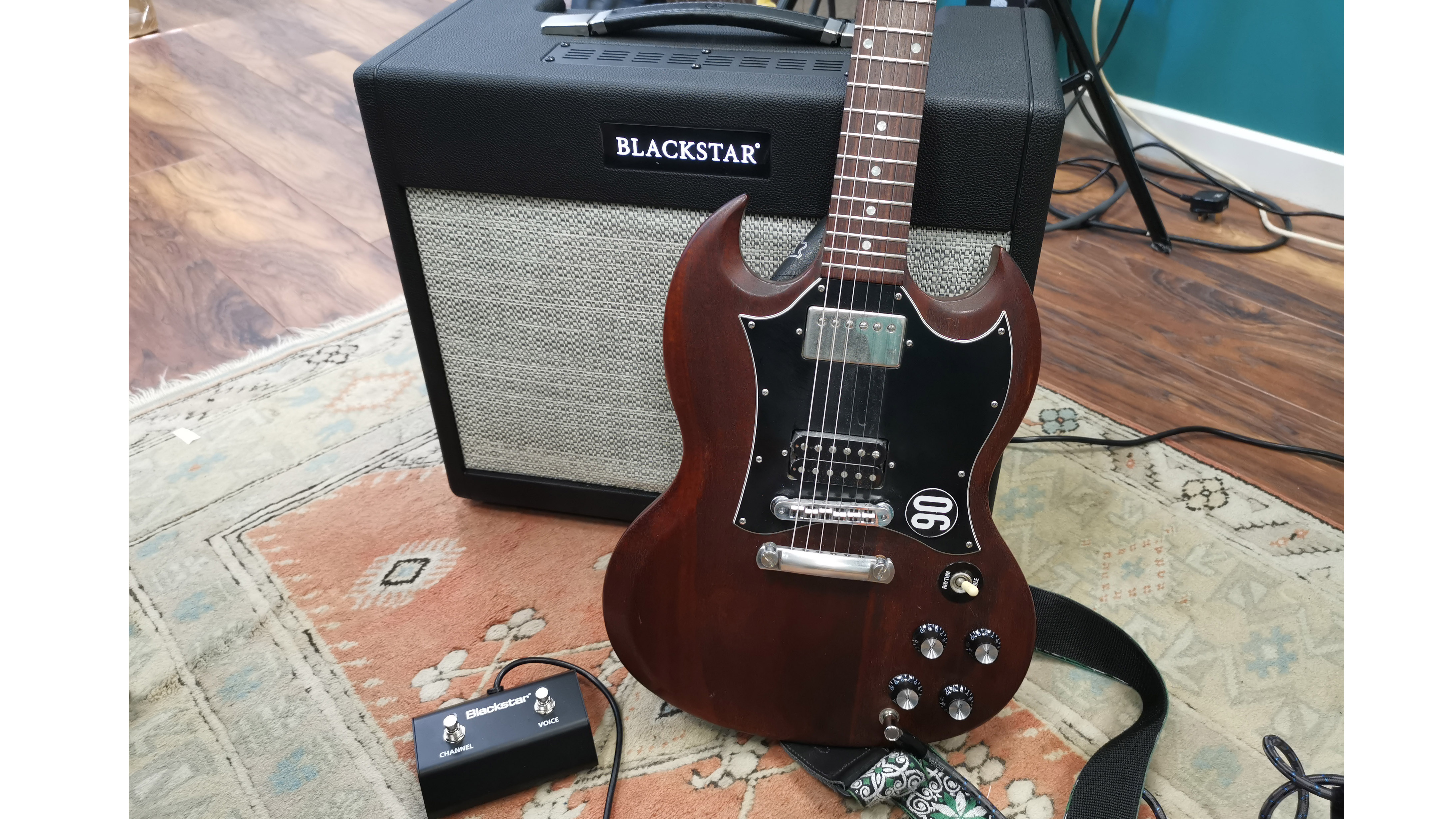
Blackstar St James review: Performance & verdict
St James 50 EL34H
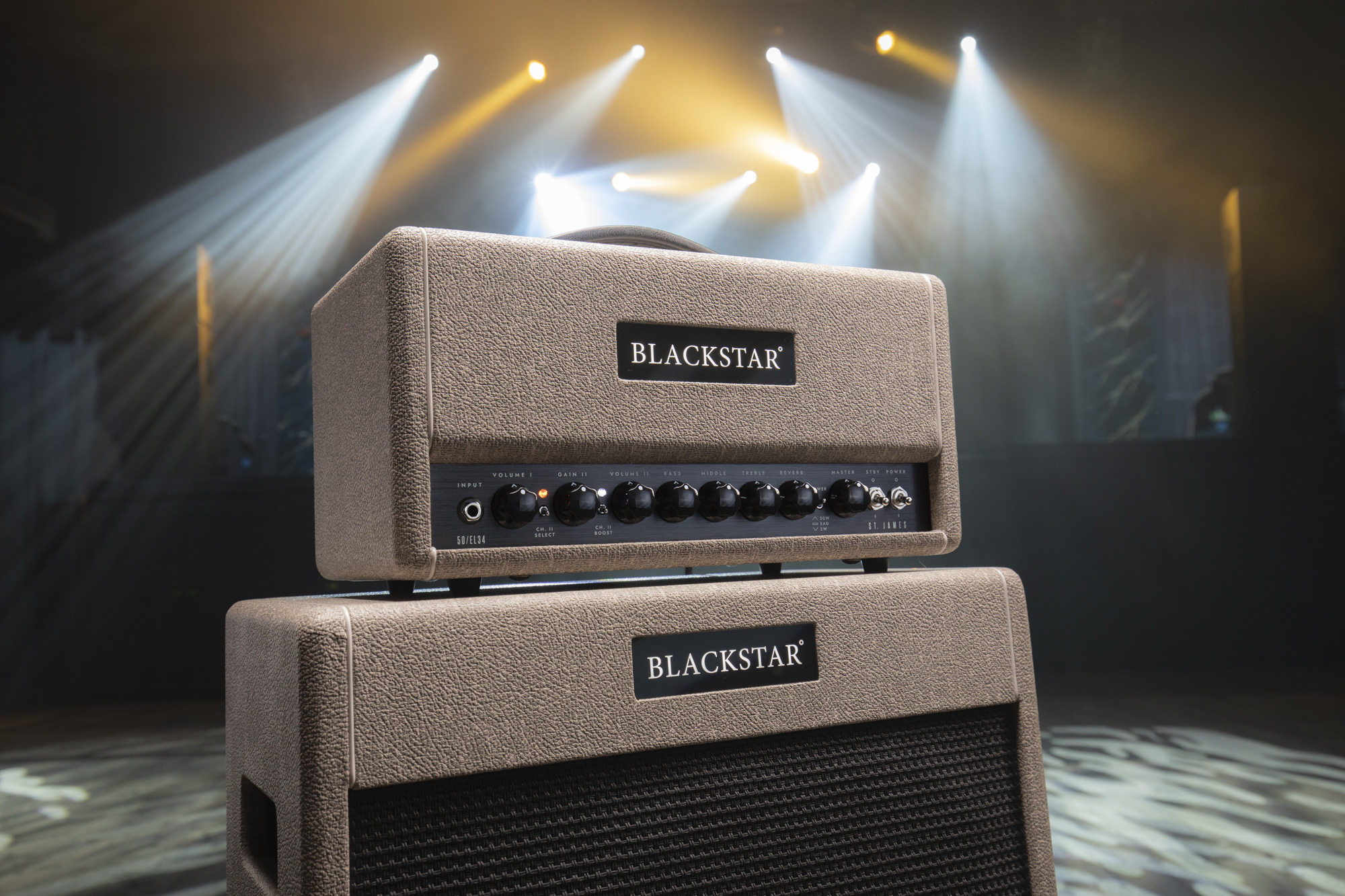
This is not an amp for saturated gain; it will cut through in a band scenario with chimey articulation
In full power 50-watt mode, the EL34 delivers the clean headroom that pedal addicts will appreciate, but it confidently covers indie and blues tones. Clarity and Voxy punch abound with the vintage-voiced channel II engaged. This is not an amp for saturated gain; it will cut through in a band scenario with chimey articulation. It becomes more of a glorious gut punch in SAG mode. It’s a useful voice to have on call, especially when channel two is pushed with our humbucker Gibson and we dig in.
This amp’s mid definition, even in the 2W mode, draws some the clearest tones we’ve experienced with our SG's Seymour Duncan ‘59 neck ‘bucker. Our single-coil Fenders sound rich and percussive in the higher gain reaches, and our go-to Blackstar EQ setting of Bass at 11 o’clock, with treble and middle at 1 o’clock provided a great starting point to begin shaping for each guitar.
The reverb here feels good at around 11 o'clock, even with drive pedals, and having efficient tone and volume pots on your guitar gives you plenty of options without a stompbox in sight. So while we found it easy to balance the two footswitchable channels, we enjoyed dialling back the gain on channel II with the Japanese Strat’s volume pot just as much.
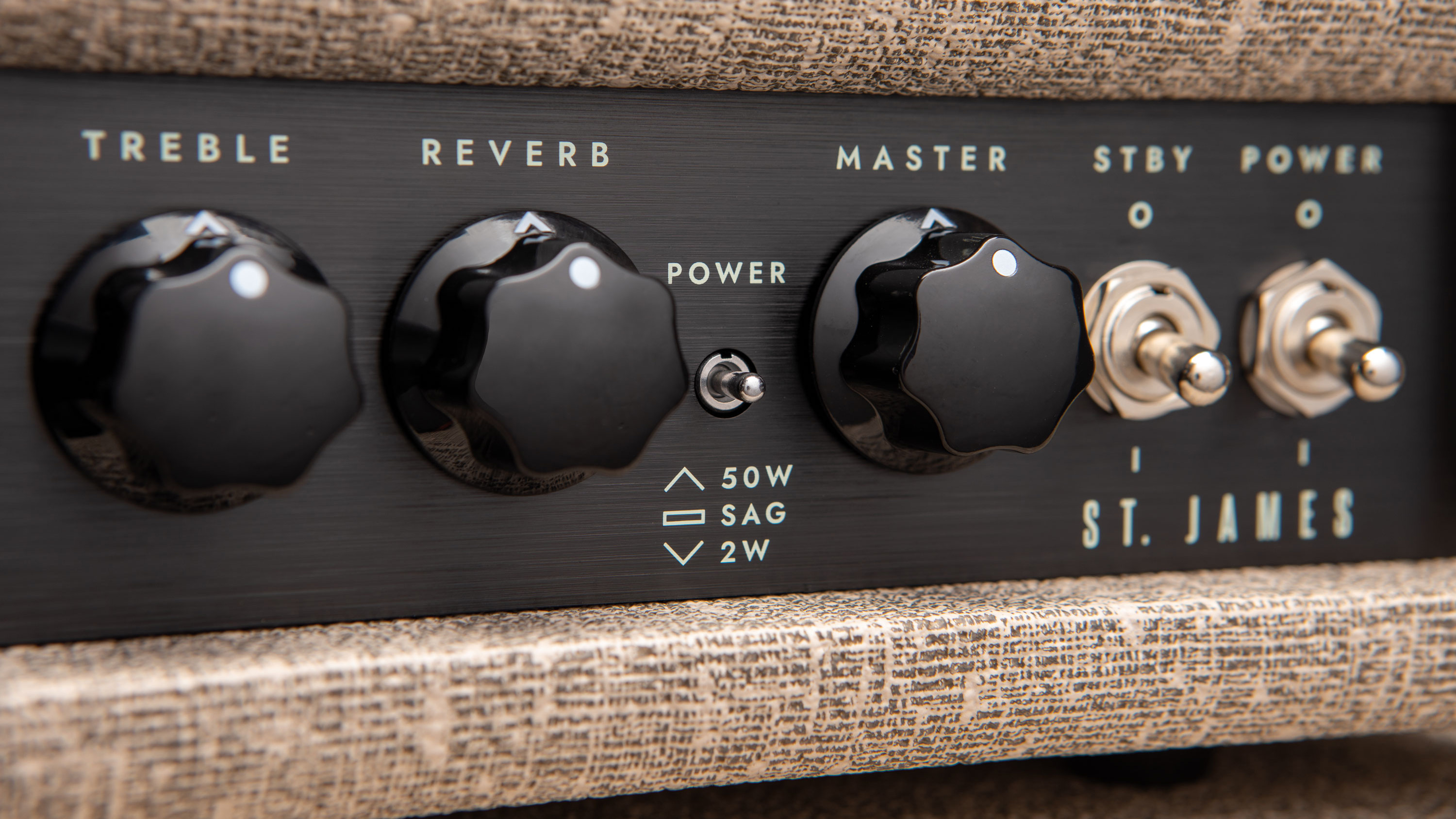
How you interact with these channels will also depend on where overdrive pedals lie in your tone world, if at all. Our Klon-esque EHX Soul Food provided the ideal candidate as a test subject to see how we could push the EL-34 St James while retaining its vibrant character. And this is where tagging the amp as ‘the vintage one’ isn’t always so accurate.
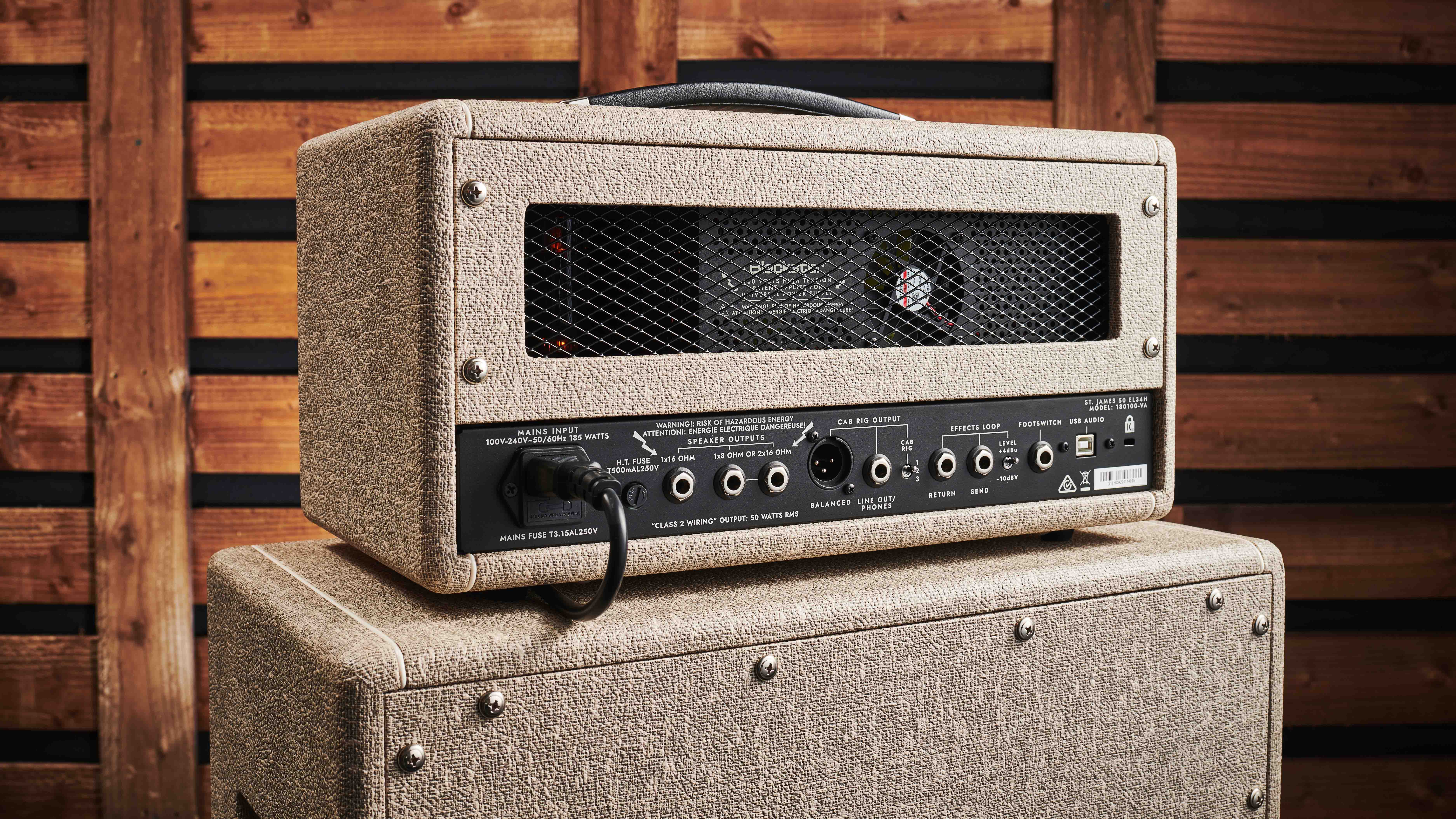
If you’re from the school where heaviness is about the way you use gain alongside amp's tonal strengths, not how much you use, you’ll appreciate just how devastatingly defined this amp is when pushed by the right kind of drive pedal. Would we use it with high gain metal pedals? Probably not, because there’s so many other options for those tastes, but moreover you begin to override this St James’s great qualities if you saturate it excessively.
Nevertheless, we got some great heavy grunge / alt rock tones with a Lil’ Rat, where we were balancing the second channel with it without losing that attractive chime the amp brings that will be so valuable on a stage.
St James 6L6
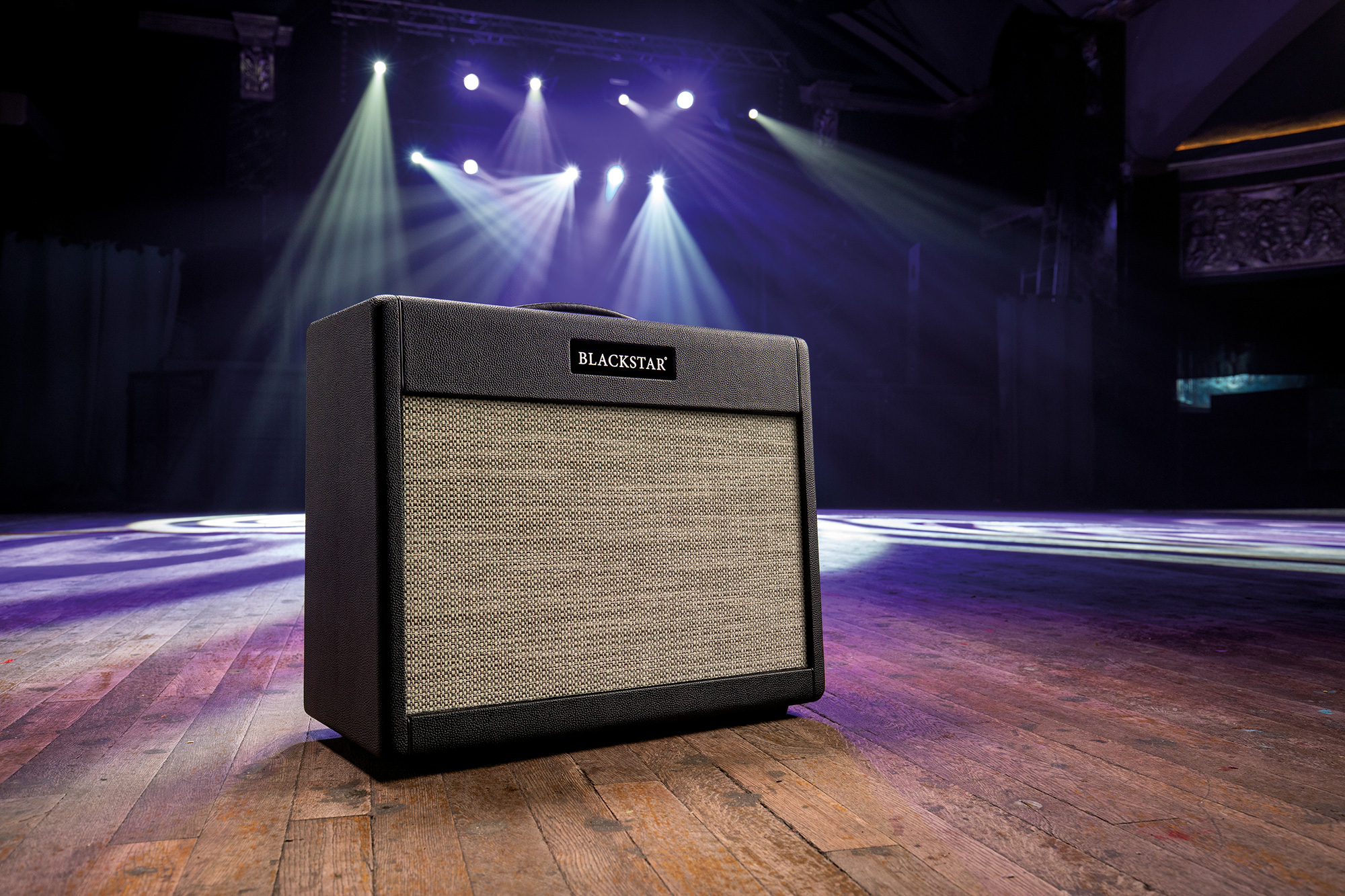
Aka The Dark Destroyer. This is the St James you come to for its high gain finesse. The US clean channel is the same as the EL34 model’s ‘60s Fender influence but the drive channel is very different.
Think of the overdrive channel’s first voice as the meaty side of blues and rock, picking up the baton from the higher gain side of the EL34, with voice two as metal. In place of the EL-34’s chime there’s a juggernaut low end in the later that is complemented by the physicality of articulate mids and highs – no fizziness here, folks. It sounds huge for more contemporary metal.
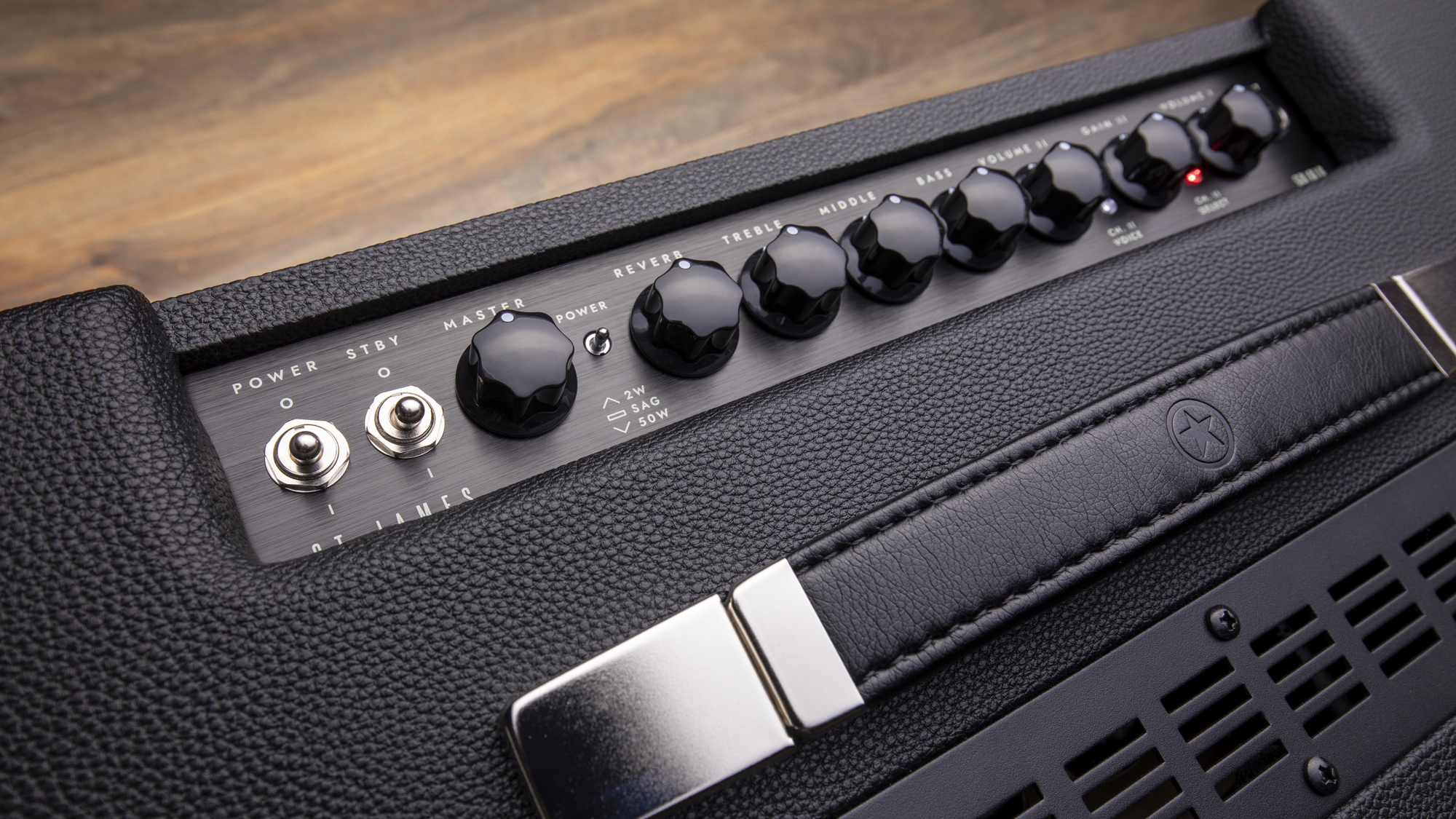
Pedals are welcome to the party here too. Eighties thrash and classic metal aficionados may prefer to run a distortion or drive into Channel II's first voice. We had great results with a Walrus Audio Iron Horse with the gain back just before 3 o’clock and Gain II on the St James just after noon (there is no Gain I BTW). Of course, this has the added voice of driving your clean channel, should you switch over.
Because of the tight low end character here we were less inclined to use the SAG mode in higher gain territory, though it would prove a useful option for a different flavour in a studio setting. With gain dialled back it’s a superb voice for digging in with a rounder, softer compressed and more vintage character from notes with our test Fenders. Further enhancing the versatility here.
Cab Rig

The digital element is significant here because it goes beyond the competition in the level of control it offers players for their direct-out tones. And if amp modelling processors use output flexibility as a selling point, then why not real valve amps too?
We’ve already had very satisfying results recording with a Dept 10 Dual Drive as part of a pedalboard into Logic. Here we were able to directly compare a mic’d recording for both the EL34 head / cab and the 6L6 combo. Like most people, we always prefer to mic a cab when recording, then adding the reverb magic later, but it’s simply not possible most of the time at home so the 2W mode and the Cab Rig options here are certainly welcome, but how much of a compromise is the latter?
Cab Rig’s huge strength is being able to dial in three onboard presets that you can pore over and tweak in its easy to use software; three distinct sounds to call on with a wide array of cab, preamp, mic, speaker and room type available. It’s a dizzying array of parameters at first but you can just stick with the factory selection to start with.
Cab Rig is a great feature to see here because of the option of additional flexibility, without compromising the core offering of valve amp and real cab response
It won’t be a surprise to anyone who’s spent much time recording mic’d cabs to find the sense of physicality captured in the St James tones with our SM57 was superior in an A/B test; brighter, crunchier when driven and that’s really credit to the great cabs here too.
But Cab Rig is a very good compromise when we started to tweak around with a virtual SM57 and more mics in the software with different cabs and other combinations. There’s also the option of running that Cab Rig output to the mixing desk live if it’s more practical.
It's a really great feature to see here because of the option of additional flexibility, without compromising the core offering of valve amp and real cab response. And this reviewer has gigged with a Blackstar Dept 10 Dual Drive and Cab Rig into an active cab and we think players will be surprised at just how usable it is.
MusicRadar rating: Two different amp propositions that both excel in their aims. The St James amps showcase Blackstar's strengths right now; delivering genuinely useful innovation for players that complement what are first and foremost superb valve amps for stage, studio and home.
Blackstar St James amps review: Hands-on demos
MusicRadar
Blackstar
Leon Todd
Chicago Music Exchange
Noisegate
Andertons
Leigh Fuge
Blackstar St James amps review: Specifications
- TYPE: Valve combo and head: St James EL34 2 x ECC83, 2 x EL34; St James 6L6: 2 x ECC83, 2 x 6L6
- OUTPUT: 50-watts RMS with optional 2W
- DIMENSIONS: St James 50 heads: 402 (W) x 222 (H) x 214mm (D) Combos: 535 (W) x 462 (H) x 259 mm(D)
- WEIGHT (kg/lb): St James head: 6kg / 13.2lbs, 50 1x12 combo: 11kg / 24lbs and St James 212 vertical 2x12 cabinet: 13.5kg / 29.8lb
- CABINET: Candlenut
- LOUDSPEAKERS: Celestion G12Z-70 Zephyr
- CHANNELS: 2
- CONTROLS: Volume I, Volume II, Channel II select, Gain II, Voice (6L6 models) / Boost (EL34 models) switch, Bass, Middle, Treble, Reverb, Power Switch: 50W, SAG and 2W power output, Standby Switch, Master, Power Switch
- OUTPUTS / CONNECTIONS: Effects Loop return and send, Effects Loop Level Switch, USB B Audio Socket
- HEAD SPEAKER OUTPUTS: 1 x 16 ohm, 1 x 8 ohm or 2 x 16 ohm
- CAB RIG OUTPUTS: Cab Rig speaker simulated output mono balanced XLR DI output socket and stereo jack line out phones socket, Cab Rig Switch
- FOOTSWITCH: 2-button footswitch (supplied) toggles channel and boost for St James EL34, toggles channel and voice for 6L6.
- CONTACT: Blackstar

Rob is the Reviews Editor for GuitarWorld.com and MusicRadar guitars, so spends most of his waking hours (and beyond) thinking about and trying the latest gear while making sure our reviews team is giving you thorough and honest tests of it. He's worked for guitar mags and sites as a writer and editor for nearly 20 years but still winces at the thought of restringing anything with a Floyd Rose.


